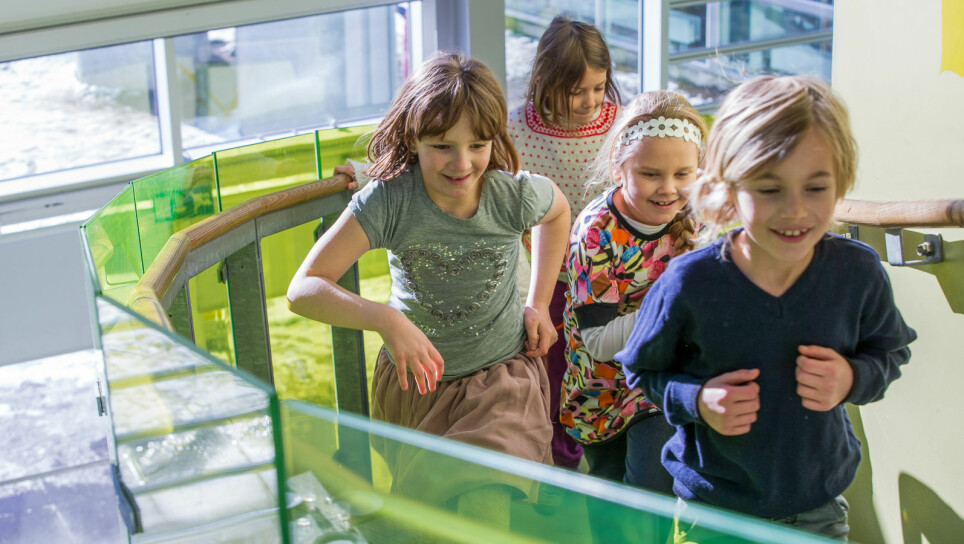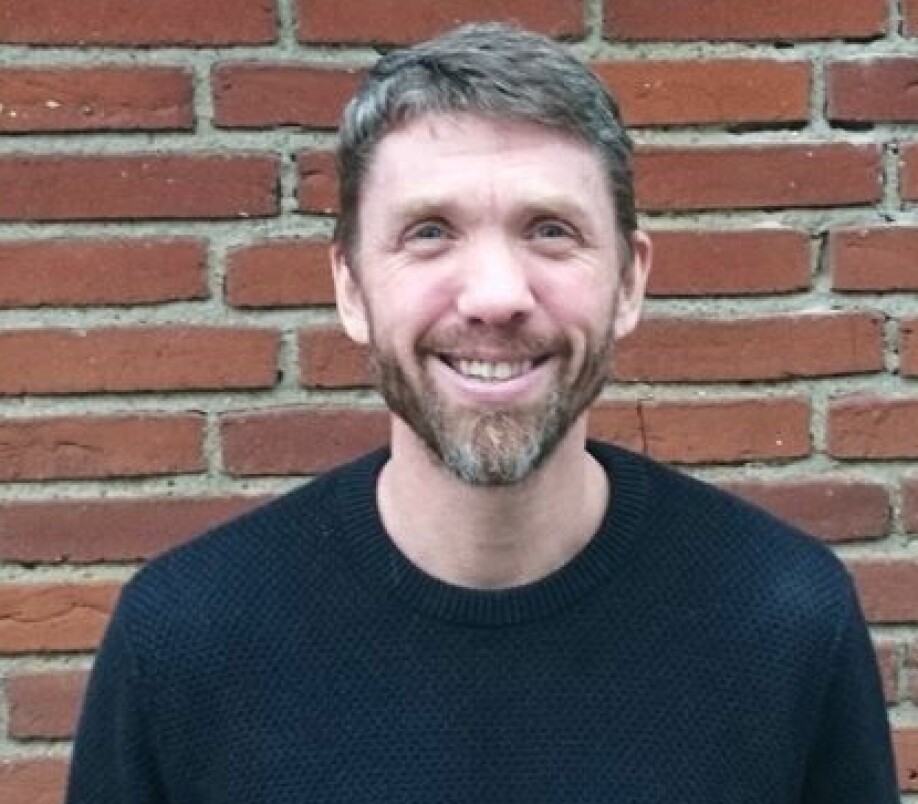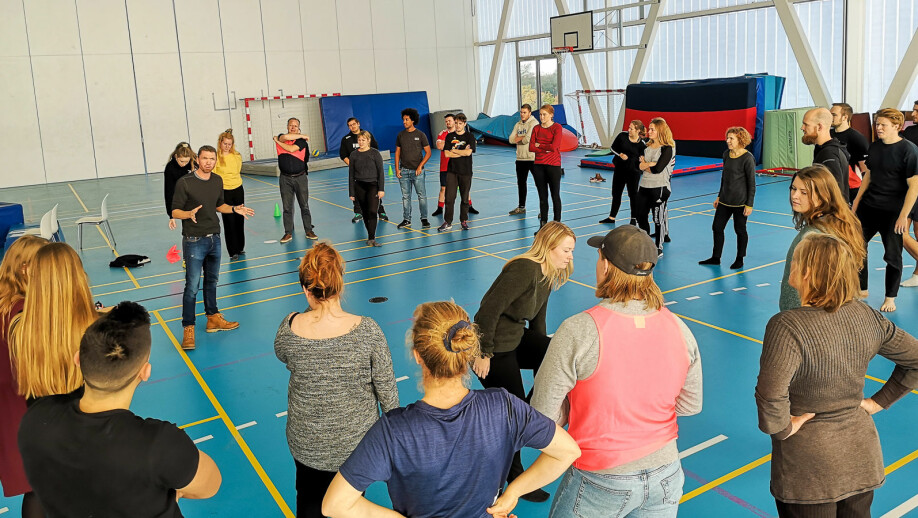THIS ARTICLE/PRESS RELEASE IS PAID FOR AND PRESENTED BY The Norwegian School of Sport Sciences - read more

Move your way to better learning
– More activity in school? Sure! However, everyone – from teachers to politicians – is thinking too narrowly about how to get pupils moving more. Students are thus missing out on some great opportunities to learn in a much better way.
That’s what Kasper Madsen, who has researched how to use movement to learn better, says. He believes that activities with teaching should be used in completely different ways than just as a means to get your heart rate up.
“Both the Norwegian and ‘my’ Danish schools are trying to introduce more physical activity. However, the way most people are thinking means that they are missing out on golden opportunities to help students understand, recognise, and remember in a completely different way. The PISA effect, with such a great emphasis on theory and pure learning by rote has been ruinous,” he says. We'll come back to that.

What type of movement?
Kasper Madsen, from Denmark, works at Via University College in Aarhus. His research has been part of the major iMOOW! study, where researchers from two Danish universities have visited 24 schools over the past three years to find out how to make the best use of movement. The requirements have been long-standing: Pupils must have at least 45 minutes of physical activity every day – but in what way?
Now he believes he has found at least one important answer. And although everything was conducted in Denmark, the results can be directly applied to Norwegian schools, he believes. And this applies all the way from elementary school all the way up to high school.
The body must be part of learning
“Teachers need to think about movement in a different way. It's about perceiving and understanding things in a completely different way if your body is also part of it. Or, essentially: If it is part of the learning,” says Kasper Madsen.
“The body is extremely important for all types of recognition. We sense and understand the world through movement, which is why it is important to introduce it into teaching at school.”
Madsen has only addressed the opportunities to improve learning. He has not studied the impact of physical activity on physical health. And the logic behind it all is fairly simple:
“For example, if you dramatise a story in a Norwegian or History, you have to imagine how each of the characters experiences the situation,” he explains. He believes that by doing this, you go much deeper into the subject, and improve a number of cognitive functions – and the learning experience.
Create experiences
“It will be a completely different experience if you get to feel, for example, some of the uncertainty of a historical event in your body instead of just reading about it. At the same time, you get emotional experiences.”
The teacher gathers the pupils in a large room: – Let’s look back to October 1943. The Nazis have occupied Denmark and want to intern all Jews in concentration camps. The resistance movement wants to help the Jews escape to Sweden. Now, each of you is a Jew, a resistance fighter, an informant or a Nazi, but no one knows who. Jews and resistance fighters will have a code word, but watch out for informants! Each student receives their role on a piece of paper, and then they go around, wondering who is who. Suddenly, two students shake hands and make a run for it. A “Nazi” gives chase, but they get away and reach the Swedish coast.
How students get physically involved in different subjects depends entirely on what they are learning. Madsen also admits that it can be difficult for a teacher to create situations for everything. Nevertheless, he firmly maintains that this is possible for all subjects and for almost every conceivable situation – in History, Geography, Physics, Norwegian, German or anything else.
In schools where they helped develop the new didactics, teachers also said that it was tricky at first, but that it eventually became easier. A small toolbox has been very useful.
“We have created a set of resources that they can start with. This will make it a lot easier,” Madsen says.
Verb exercise: A group of pupils gather in a corridor, and they take turns to move in different ways while the others try to describe it in words: Spazieren, klettern, springen, liegen etc. After a few rounds, students can discuss what these verbs mean for the language and for communication between them.
Students become engrossed
The aim of all of this is already part of the Danish curriculum. The aim of movement is to “promote well-being, health and learning” and also to contribute to the “positive development of mental, emotional and social processes”.
A corresponding part of the Norwegian curriculum states that “A benevolent and supportive learning environment is the basis for a positive culture where the pupils are encouraged and stimulated to develop academically and socially.”
“You will achieve all this, or at least it will be a lot easier, if you involve pupils physically in learning,” says Madsen. “It may just seem like words, but when students encounter academic content through movement, that movement can help to engage students with the world in a more tangible and useful way.”
As a bonus, at the same time you solve the problem of young people sitting still for far too long – but the health aspect is not something Madsen has addressed in his thesis.
Physics, 7th grade: Students are to learn about the conductivity of different materials. They are sent out to observe how different materials feel: Bicycle handlebars, a lamppost, a window, wall panels and stone. They note how the temperature of different materials feels different and then discuss why.

Easier for teachers
One advantage of these didactics, Madsen believes, is that teachers can succeed in achieving this more easily than if they were to think about movement in the same way as they do in sport.
“Very few are physical education teachers, and they do not have the background to create and incorporate athletic exercises in more academic subjects.
It is also easier for students to join in with miming, sensing, dramatising or similar because this does not require a heightened pulse or sporting ability.”
“But you still have to reveal more about yourself? And not every pupil will find it so easy? Some might even be teased if they do something strange?”
Mathematics, 4th grade: The pupils are studying trigonometry. They form groups and have to make different types of triangles with their bodies. They are to note the differences between the right angled, isosceles and maybe other types of triangles.
“There's a danger of that. For most people, it will be a positive thing. As they work together, have to do things together, touch each other, and experience things together, they will also understand each other better. However, we’ve seen that some just want to hide. Teachers also need to think about this when planning activities.”
He says that the techniques require preparation and that this takes time, but that there is great potential for a really good return.
“You probably also remember good role-playing or other practical things you did in class at elementary school? There's good reason for that.”
Victims of the Pisa effect
Kasper Madsen thinks that teachers were better at thinking about movement until the year 2000 or thereabouts.
“Many people have been affected by the Pisa effect,” he says. Both Norwegian and Danish schools scored poorly in reading and maths. The authorities wanted ‘more academic study’, with more reading and theory. “This has led to little room for manoeuvre regarding what teaching can involve. This new way of learning, however, gives us a fantastic opportunity to incorporate experiences and encounter that books and whiteboard teaching alone cannot provide.”
See more content from The Norwegian School of Sport Sciences:
-
‘Supershoes’ may help you run faster
-
Perfectionists are more likely to suffer from mental health problems
-
Helene has abdominal separation, but can still lift heavy weights
-
Male dominance in Norwegian sport: Top officials depend on a ‘ground crew’ at home
-
Do you have to operate, or is rehabilitation enough to treat an ACL injury?
-
Simple changes increase your speed in the tracks – and in other arenas





































